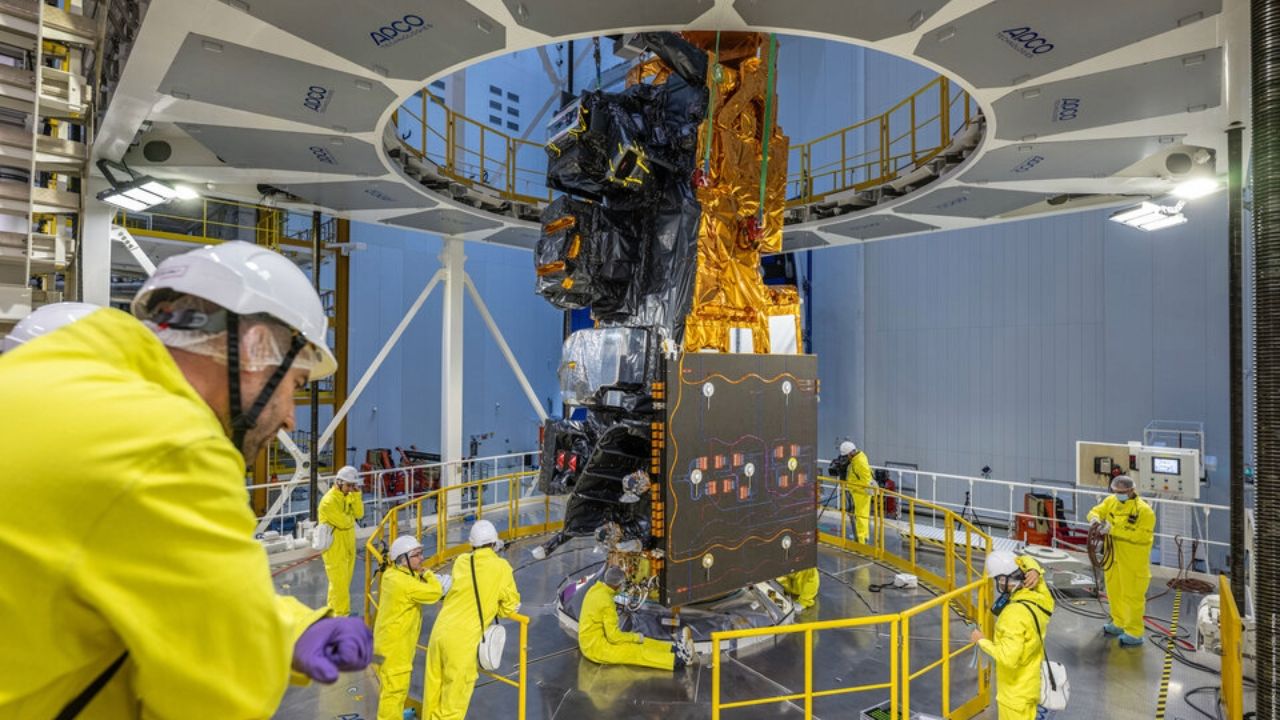The European Space Agency (ESA) has taken a significant step towards launching the next generation of weather satellites with the sealing of the MetOp-SG-A1 within the fairing of its Arianespace Ariane 6 rocket. This milestone occurred in early August 2025, marking a pivotal moment in the development of advanced Earth observation technology.
The MetOp-SG-A1 is equipped with an array of sophisticated scientific instruments designed to enhance atmospheric monitoring. Among its capabilities, this satellite will support the Copernicus Sentinel-5 mission, which focuses on providing precise data regarding Earth’s atmosphere, including tracking air pollutants and greenhouse gases. The MetOp-SG-A1 will work in tandem with the forthcoming MetOp-SG-B1 satellite, scheduled for launch in the following year. Together, these satellites aim to significantly improve the analysis of climate variables and provide vital information to scientists and policymakers.
The launch is set to take place at Europe’s Spaceport located in Kourou, French Guiana. The Ariane 6 rocket represents Europe’s new generation of launch vehicles, designed for increased flexibility and cost-effectiveness in space exploration. This rocket last flew on March 6, 2025, successfully placing France’s CSO-3 reconnaissance satellite into orbit.
The upcoming launch presents ESA with an opportunity not only to test the capabilities of the Ariane 6 but also to contribute significantly to climate science. The enhanced observational capabilities of the MetOp satellites will facilitate better understanding of environmental changes and support efforts to address climate-related challenges.
ESA’s commitment to advancing satellite technology underscores the importance of reliable data in understanding our planet’s evolving climate. As preparations continue, the successful launch of the MetOp-SG-A1 will represent a major achievement in the field of meteorological research and Earth observation.








































































